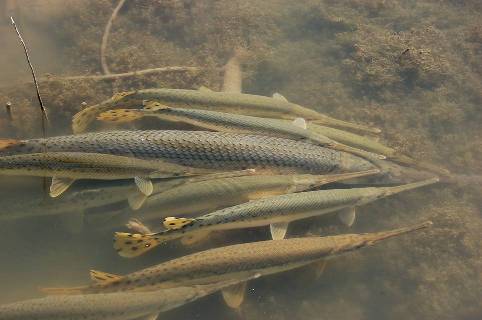
Reproduction
Males sexually mature around 2 years of age, much sooner than
the typical female around 6 years of age. Females however grow
faster and larger than males(Klaassen & Morgan 1974). Females
typically live well over 20 years old while males are only
occasionally recorded living past 11 years old. Head
shape, width of snout, placement and size of fins are the only
distinguishing characteristics between male and female gar. The
male to female sex ratio can vary from 3:1 to 5:1 in any given
area(Netsch & Witt 1962).

During times of spawning it is common to see several males
chasing after 1 large female. Gar spawn seasonally, in the spring
and in the summer. During these seasons there is a 6-7 day time
frame from which they spawn(Kelley 2012). The average female
gar produces 30,000 eggs, though this can fluctuate depending on
the size of the female. The eggs the female lays are green and very toxic,
only a handful of species can eat them without severe illness or
death. After the female lays here eggs the adhesive coating on
them sticks to the surrounding rocks
or vegetation(Klaassen & Morgan 1974). Longnose gar do not care
for their young. They leave the nursery area almost immediately
after the eggs are laid. The eggs will hatch within 5 to 9
days (McGrath 2012).
